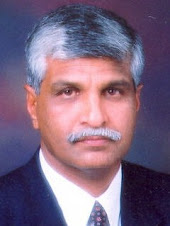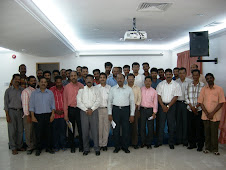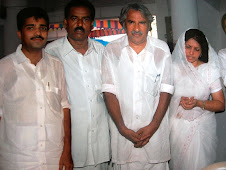Niranam today is a small village in central Travancore region in Kerala, India.It occupied a central place in ancient Kerala, as an important port, being on the confluence of the Manimala and Achenkoil Rivers. It is almost 5 km distant from Tiruvalla in Pathanamthitta District of Kerala.
This beautiful village has a rich tradition of literature, cultural exchange and religious harmony. According to historians and geologists, Niranam was a sea port hundreds of years ago, having trade relations with the Roman Empire and the Middle East. This fact was confirmed by the discovery of ancient Roman coins from Niranam and nearby areas by archeologists. Niranam is also mentioned in the writings of Pliny and Cosmos Indico Pleustes as a trade centre. The references to 'Nelcyndis' is construed as a reference to a port near Kollam and the probability is either Kollam or present day Niranam. Geologists suggest that sea retracted from this area due to some major geographical changes. The great flood of 1341 AD also had helped to shift the sea westwards as a result of the silt filling in the direct sea route from Niranam. Even today the soil of nearby areas of Niranam is sandy and resembles beaches, though presently these places are not in proximity of sea. The village next to Niranam is Kadapra, and this name is a derivative of the Malayalam word ‘Kadappuram' which means ‘beach'. Centuries later, Purakkad, west of Niranam, gained in importance as a port and this port was controlled by the Rajah of Purakkad/Ambalappuzha.
Probably the importance of Niranam as a port paved for the arrival of St Thomas here in the first century AD and then led to the establishment of a church and community here, most probably a Jewish trading community, who became Christians and later were controlled by the Syrian Church of Antioch and Edessa. (Read about Niranam St Mary's Orthodox Church). The Christian community in Niranam is thus one of the oldest, anywhere in the world. After the split of the Syrian Christian Church into Catholics and Orthodox factions, in the 17th century, Niranam church came under the control of the orthodox faction. Niranam Cathedral has been the seat of the Orthodox church since then.
Now almost all Christian Churches and denominations as well as other religions have a presence in Niranam. All are living in harmony and take part in festivals of other religions.
It is worth mentioning that the Vaipur and Kallooppara churches as also the Tiruvalla churches were offshoots of the Niranam church and community.
St. Mary’s Orthodox Syrian Church, Niranam, popularly known as Niranam Valiyapally, is a parish under the Niranam diocese of the Malankara Orthodox Syrian Church. This church was founded by St. Thomas (Mar Thoma), the Apostle of Jesus Christ, in AD 54. The present building, supposedly the fourth, was constructed in 1912 and was reinforced during the year 2000. Among the attractions at the church are a huge Cross made of granite, relics of St. Thomas, remnants of the old church, the golden cross etc
Niranam Church has a rich history of being the symbol of Christian faith in Kerala and a citadel of Orthodox Christianity since its inception in AD 54 by St Thomas, one of the twelve apostles of Jesus Christ. St Thomas reached Kerala in AD 52 and started preaching the gospel. He founded 8 churches, which are called 'Ezhara Pallikal', meaning seven and half churches. These were at Kodungallur, Kollam, Niranam, Nilackal (Chayal), Kokkamangalam, Kottakkayal (Paravoor), Palayoor (Chattukulangara) and Thiruvithamkode (the half church). St. Thomas who had great respect for the Holy Virgin, named all these churches after St. Mary. At Niranam, St. Thomas baptised many people and ordained people with social eminence as priests, to administer the church.The church founded by St Thomas at Niranam was adjacent to Sri Thrikpaleswara Hindu Temple of Lord Shiva. Some adversaries of the new faith later took out the cross, founded by the Apostle and threw it into the neighboring river. When St Thomas returned to Niranam after two years (AD 54) he heard about this and went in search of the cross. He found it at a place in the down stream and again founded the church at that place, which is believed to be the present location of the church. According to the available records, the present building is the fourth, which was built in 1912. The third building was built in 1259.
Analysis of soil says that during the first century, Niranam and the surrounding places were costal region. Probably, it was a place where the river joined the sea. Some historians are of the opinion that the name Niranam derived from an old name 'NeerMannu', which meant land with water. Presence of water bodies enabled travel through water and it is believed that the Apostle reached Niranam in a ship (it might be a big boat). During the 14 th century, there was a great flood and the geography of the area changed a lot because the sea retreated exposing a lot of land.
Even today, there is a place at Niranam, near Kolarayar - a tributary of River Pampa - named 'Thomathukadavu', which is supposed to be the spot where St. Thomas got down from the ship. The word 'Thomathukadavu' might have emerged from 'Thoma Vanna Kadavu', which means the jetty where Thomas came.
Niranam Church was the southern headquarters of the Orthodox Church in Kerala for centuries. Many of the Malankara Metropolitans (the chief bishops) ruled the church by staying here. The church is famous for its historical importance, loyalty to the Indian Orthodox Church, architectural beauty and some of its antiques. Almost all of the old churches in southern Kerala - whether belonging to Orthodox, Marthoma or Roman Catholic churches - were separated from this mother parish, during course of time.
Niranam Church witnessed a number of historical events in the church history including the establishment of a Catholicate in the Indian Orthodox Church in 1912. The first Catholicose and second Catholicose of the church were ordained at Niranam Church (in 1912 and 1925). Four of the Malankara Metropolitans of the church passed away while staying here and two were buried here. For a full list of important events at Niranam Church
Monday, June 16, 2008
Subscribe to:
Posts (Atom)



